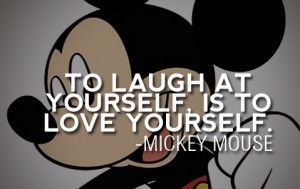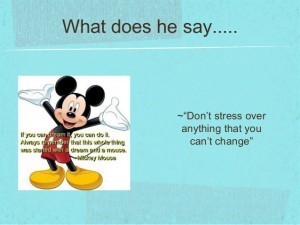Laura Langston's Blog, page 37
February 18, 2015
The Writing Top Ten List
 At the beginning of a writing career, we’re pumped, we’re dreaming big dreams, we think we know what to expect. Most of us hedge our bets by joining groups and organizations. We study the industry, we debate self-publishing versus traditional, we pour over Twitter feeds of writers we admire. We set writing goals and career plans. We jump in with our eyes wide open. We are prepared.
At the beginning of a writing career, we’re pumped, we’re dreaming big dreams, we think we know what to expect. Most of us hedge our bets by joining groups and organizations. We study the industry, we debate self-publishing versus traditional, we pour over Twitter feeds of writers we admire. We set writing goals and career plans. We jump in with our eyes wide open. We are prepared.
And then we end up in the trenches wrestling muddy alligators and the rose colored glasses we didn’t even know we were wearing get smashed, leading to a particularly painful realization: we didn’t know squat when we started out and we know only marginally more than squat now.
But this is what I know for sure:
1. Everything takes longer than you think it should. First drafts, first sales, editorial feedback, royalty cheques.
2.There’s never a perfect time to write a book. Unless you’re a hermit living on the side of a mountain (in which case you have other issues to deal with), there’s always something pulling at you – everything from minor inconveniences to major life events. It will always be this way. Always.
3. The muse is real and not as fickle as you think. She shows up when you put your butt in the chair to write. She takes off when you surf Twitter or CNN or get too involved in email. She may not always be at her best but none of us operate at 100% efficiency all the time. Cut her some slack but take a seat. Your presence feeds her.
4. Some days writing is about as easy as using a toothpick to sculpt a piece of art out of a chunk of cement. And doing it blindfolded. Writing is work. Work isn’t always fun.
5. Meg Cabot said, “You aren’t a $100 bill. Not everybody will like you.” Not everybody will love or like your book either, even if it’s well-crafted with loveable, relatable characters and a page-turning premise. I don’t like cake. I don’t need to taste it to know and I hate it when people try to guilt me into eating a piece. Which leads to realization 5 a) If somebody doesn’t want to read my book, chances are they know best.
6. People your real world with a range of characters. I’m blessed with a number of writer friends who get this gig, but I also have friends who don’t write, can’t relate, and couldn’t care less about sell through figures, contract issues or option books. They care about me. And they care enough to help me stay grounded in the real world. Which leads to this:
7. Breathe fresh air once in a while. I need to recharge away from my desk regularly, and I do it best outside when I have nothing more pressing to do than stare at the clouds and daydream or maybe dig in the garden. A trip away helps too, though that hasn’t been possible lately (see number two).
8. Control comes down to 26 letters. All I can control is how I arrange the letters on the page. That goes for my tweets, my Instagram or Facebook presence, and anything else I say on social media. The rest of this gig is pretty much a crap shoot and out of my control. Wishing it were different is a waste of energy.
9.The best promotion is a good book. And as Bob Mayer added, “Better promotion is more good books. Everything else is secondary.”
10. Finally – reading is never a waste of time. Without readers, we wouldn’t need writers. And that would put me out of a job.
February 11, 2015
Every Writer Needs a Lizard

Every writer needs a lizard. Or maybe a frog or a spider or, in my case, a golden ladybug.
We need a mythic animal or a symbolic touchstone where we can park our doubts when they get in the way of our writing. My friend Rachel has a lizard painted on the wall of her office. Lise has a stained glass frog hanging in her window. I have a golden ladybug. She sits on my desk as a symbol of luck. One day when luck seemed about as attainable as a trip to Mars, I looked down and there she was: benign yet strong, a little hopeful even. And perfectly capable of swallowing my doubts like her live counterpart swallows aphids in the garden.
Doubt is different than disappointment. In the aftermath of an immediate bad news moment like a rejection or poor sales figures or a difficult conversation with an editor, chocolate is a quick fix. So is triple cream brie or a bracing gin and tonic or a head-pounding workout if you have no hedonistic qualities at all. A walk & talk with a writer friend or a good movie help too.
I’m not talking about disappointing news. I’m talking about those ugly doubts that linger like the nasty cough that won’t go away after the cold is gone. The doubts that say ‘you aren’t good enough,’ ‘this story bites,’ ‘the odds aren’t in your favor,’ or ‘find a real job.’
Doubt like that doesn’t belong at the desk.
In his outstanding book ‘Writing from the Inside Out’ Dennis Palumbo says writers need doubt in the same way we need faith. It’s a mistake, he says, to strive to banish doubt, to see it as the enemy. “Just as courage has no meaning without fear, faith has no meaning without doubt. They’re the yin and yang of all aspiration,” Palumbo writes.
Most of us, however, want faith to win over doubt. We’ll take whispers of inspiration, encouragement, and hope over shouts of doubt any day of the week. Not so fast, says Palumbo. The more willing we are to mine our doubts, the truer and more recognizably human our characters will be
He has me there. Anything for the writing, right?
Okay, not so fast, Dennis. There’s a fine line between doubt and despair. And despair, taken to the extreme, doesn’t serve me.
Although, I have to be honest, doubt does serve me sometimes. That niggling seed of doubt telling me the plot twist isn’t quite right or the character motivation isn’t strong enough, that’s healthy doubt. Welcome doubt. But when doubt is so strong that faith is a distant memory, I have a problem.
That’s when I hand it over to my ladybug. ‘Take it and hold it and let me write,’ I say. ‘Just for today, let me have faith.’
February 4, 2015
My February Reads
 The snowdrops are up, my winter clematis is in bud, and the air carries hints of warm earth and flowers. We’re walking around in hoodies enjoying the nearly spring-like conditions. Things could change – we’ve had snow flurries in February the last couple of years – but the temperatures are unseasonably mild, the hummingbirds are flitting from the pear trees to the kiwi vines, and I’m dreaming about what I’ll plant in the garden in a few months.
The snowdrops are up, my winter clematis is in bud, and the air carries hints of warm earth and flowers. We’re walking around in hoodies enjoying the nearly spring-like conditions. Things could change – we’ve had snow flurries in February the last couple of years – but the temperatures are unseasonably mild, the hummingbirds are flitting from the pear trees to the kiwi vines, and I’m dreaming about what I’ll plant in the garden in a few months.
But for now, though, I’m staying indoors where I’m focusing on work, family, and books.
Here’s what I’m reading this month:
On the Kindle: Man Enough: A Return to Salt Spring Island by EC Sheedy
At the Gym: The Late, Lamented Molly Marx by Sally Koslow
In the Office: We Killed – The Rise of Women in American Comedy by Yael Kohen
Books read to date in 2015: 12
January 28, 2015
A Year of Writing at a Treadmill Desk
 This time last year, I set up a treadmill desk in my office. I didn’t know how it would work out – or even if it would – but I was determined to give it a shot. More and more studies are pointing out the dangers of regular sitting. Not only is movement healthy, but it engages the brain and it’s always good to have an engaged brain when you’re working.
This time last year, I set up a treadmill desk in my office. I didn’t know how it would work out – or even if it would – but I was determined to give it a shot. More and more studies are pointing out the dangers of regular sitting. Not only is movement healthy, but it engages the brain and it’s always good to have an engaged brain when you’re working.
A year into the practice and I can honestly say that working on my treadmill desk is so much a part of my day that I can’t imagine not doing it. I walk slowly, probably about 1.5 kilometres an hour, which averages out to around 70 or maybe 80 steps a minute. And I take regular breaks too, working on the treadmill for an hour followed by an hour at my sit down desk. I rotate between the two stations two or three times each day, and I usually take a break somewhere in there to walk the dogs too.
After a year, here’s what I’ve learned:
I need to switch it up. After a month or so adjusting to the technique of working while walking, I began using the treadmill desk almost exclusively for several weeks. And I paid for it. My feet got sore, my back started to hurt, and my hips ended up too tight. I have SI (sacroiliac) joint issues and I worried that maybe the treadmill desk would aggravate the condition. As soon as I limited myself to an hour at a time on the treadmill, and stayed at or below 3 hours a day, I was pain free. And my chronic SI pain from regular sitting disappeared.
Shoes matter. Since I go to the gym I’m in the habit of replacing runners regularly and I always buy high end shoes. It’s even more important on the treadmill. I’m replacing my runners every six months these days.
Walking does engage the brain. It’s not a fallacy. Working on the treadmill also eliminates any tendency I might have to surf the web or check email. As long as my manuscript is open on my monitor and as soon as my feet start moving, my brain moves along with them. Getting into the story and keeping it flowing is easier when I’m engaged in physical activity,=.
Walking is easier than standing. The treadmill will sometimes stop when I’m in the middle of a scene and want to keep going. I used to stand and continue writing. I paid for that with low back strain. If the treadmill stops now when I’m in the middle of something, I finish up my paragraph or maybe two (I allow myself five minutes, max) and then I step down and take a break.
Walking makes you thirsty. At least it seems to make me thirsty. I always have a glass of water or herbal tea beside me when I write. At my sit down desk, I’d often forget to drink it. At my treadmill desk, I never do. So my water intake is up too and that’s also a good thing.
It’s not as hard as you think. Over this last year, I’ve had people ask me how it’s going and say they’d like to try a treadmill desk but they know they couldn’t do it. Don’t be so sure. The pace is so slow after a while the movement becomes habitual. And, quite honestly, if I can adjust to it, anybody can.
This Christmas, my kids got together and sprung for a FitBit which I find much more useful than a basic pedometer (mine has a sleep monitoring component which I absolutely love). With the FitBit on my wrist I’m getting a better sense of how those daily steps add up. During the week when I write, I average between 15,000 and 17,000 steps or about 10 kilometres a day.
That’s not bad for a day on the job.
January 21, 2015
Comfort Books for Writers
 Sometimes all you need is comfort: a warm blanket, a loving hug, a dog cuddle first thing in the morning.
Sometimes all you need is comfort: a warm blanket, a loving hug, a dog cuddle first thing in the morning.
Or a book.
I tried to cull my bookshelves last week. Tried being the operative word. I have more books than I have shoes, sweaters, and probably underwear too (I also have an embarrassing number of spices and condiments in my kitchen – Ras el hanout anyone? – but that’s not relevant to writing unless you care to know how I eat; the short answer is very, very well).
But back to books. The problem started in early January when we took down the Christmas tree and put away the holiday decorations. You know that delicious feeling of spaciousness you suddenly have in the New Year?
I know it too. It’s one of the comforts of Bloatuary January. Except I didn’t feel it this year. Sometime between October and December, my book pile had babies. I’m pretty sure each title had triplets (Don’t even ask about my Kindle).
I needed to find space. So I went through a couple of bookshelves and pulled some titles to donate to the Goodwill. In the process, I stumbled over books I hadn’t looked at in a while. And one of those books brought me so much comfort at the time I read it I decided to put together a list of books specifically written to comfort writers.
These aren’t books geared to craft or business, though many writing books on those subjects also include terrific advice and comforting thoughts. I wanted books where comfort, insight or advice, was the primary goal. Think of these books as a New Year’s tonic. A writer’s jump start. The equivalent of a warm blanket, a loving hug or a cuddly puppy.
Rejection, Romance & Royalties: The Wacky World of a Working Writer by Laura Resnick. Sharp, funny, honest and insightful, these essays on the writing life cut right to the heart of the joys, sorrows and rewards of being a writer. On my keeper pile and never leaving.
The Mindful Writer: Noble Truths of the Writing Life by Dinty W. Moore. Though it’s small enough to fit in a back pocket or a bag, don’t let size fool you. This small book packs a big punch. The Mindful Writer starts by outlining the four noble truths of the writing life and then goes into four key areas: the writer’s mind, the writer’s desk, the writer’s vision, and the writer’s life. A wonderful source of inspiration and insight.
The Writer’s Book of Hope by Ralph Keyes. According to Keyes, inspiration isn’t nearly as important to the successful writer as tenacity. And encouragement and hope are cornerstones to keeping that tenacity alive. Drawing on his experience as both a writer and teacher of writing, Keyes details some of the tactics well-known writers have used to maintain hope, particularly during difficult times. Enriching and full of encouragement.
For Writers Only by Sophy Burnham. One of the first ‘comfort’ books I ever bought on writing, and still a favorite. A collection of thoughts from many great writers interspersed with Burnham’s own observations on everything from nerves and letting go to audience, productivity, and aloneness.
Writing from the Inside Out by Dennis Palumbo. Since Palumbo is both an author and a psychotherapist, he brings a unique empathy and insight into the writing life. A positive and fresh take on topics like envy, rejection, loneliness and the joy of commitment. Wise, compassionate and funny.
Bird by Bird by Anne Lamott. In spite of the fact that Lamott is one of my all-time favorite writers, I wrestled with whether to include this title because Bird by Bird does have a number of chapters directly relating to craft. However, in most cases they go well beyond craft, and reading them is more like having coffee with your favorite writer friend. That aside, this book is a must have for these three comfort chapters alone: Broccoli, Perfectionism and Radio Station KFKD.
January 14, 2015
Stepping Out and Mickey Mouse
 The first Mickey Mouse comic strip appeared 85 years ago this week and we’ve been laughing ever since. Okay, we were laughing before that too if you want to get all technical about it. But there’s no question the famous mouse has consistently brought hundreds of thousands of people joy over the years.
The first Mickey Mouse comic strip appeared 85 years ago this week and we’ve been laughing ever since. Okay, we were laughing before that too if you want to get all technical about it. But there’s no question the famous mouse has consistently brought hundreds of thousands of people joy over the years.
I’ve been thinking about humor quite a bit lately. I’m in the middle of writing a book tentatively titled STEPPING OUT for Orca Publisher’s Limelights line. The story focuses on Paige Larrson, a 15-year-old Seattle girl who wants to be a comedian. In fact, that Mickey Mouse quote – to laugh at yourself is to love yourself – could pretty much be her mantra. Laughter is Paige’s currency in life. As far as she’s concerned, laughter takes the sting out of life’s crap. It eases the pain of nasty comments and dirty looks; agonizing moments in gym class; and those awkward pauses at parties.
Paige has been uploading comedy videos to YouTube, and she’s starting to get noticed. Her daily views are rising. She has subscribers. She’s determined to be the biggest YouTube sensation ever. But her two best friends think she’s undervaluing herself. Without her knowledge, they submit one of her videos to an International Teens in Comedy Festival. Paige is shortlisted. Suddenly, she faces the biggest opportunity of her life. But she also faces her biggest challenge. Because in order to compete, Paige will have to step out of her comfort zone and walk out on stage to perform in front of live bodies. That’s no laughing matter when she has a disability she’s self-conscious about, and the disability will be front and center too.
I’m having fun writing the book, though I have to admit it’s stretching me a little. I love comedy (the wackier, the better; I loved Craig Ferguson with his fake horse and gay robot skeleton), but stand-up comedy makes me uneasy. Especially when newish comedians are performing. Ferguson was great at giving young comedians the stage near the end of his show. I admired his generosity, but if one came out, I’d tune out. At least I did before I started researching STEPPING OUT. I would worry that no one would laugh . . . that they’d bomb in a very public and humiliating way. The thought would make me almost hyperventilate. Certainly it was enough to make me leave the room or switch channels.
At first I thought maybe I shouldn’t be writing a book about a comedian at all. Why am I? The editor was looking for a manuscript about a teen who wants to be a comedian . . . the idea that many comedians use laughter as a coping skill has always intrigued me . . . Paige crept out of my consciousness and tugged on my sleeve late one sleepless night and . . . well . . . insert ‘the rest is history’ cliché here.
It turns out my discomfort is a good thing. At least I hope so. If nothing else, I can relate at a visceral level to the fear and discomfort Paige feels as she goes through the process of preparing for the competition and stepping out on stage.
The big question, however, (aside from: will Paige win?) is can I convey the depth of that emotion to readers? I hope so. The manuscript is due at the publisher’s in six weeks. And it’s due out sometime next year. We’ll see how it goes.
January 7, 2015
New Books & a New Year
 Last year, for the first time, I noted down every book I read in a green notebook. I’ve attempted to track my reading before – and I’d start with the best of intentions (even give them a rating of sorts) – but at some point in the process I’d forget to add a title or two and the whole intention thing would slide. Since I really wanted a clear sense of my reading preferences, and an exact book count, I decided to try again. This time, I decided to post the results on my blog every month. I figured it would make me feel more accountable. It did.
Last year, for the first time, I noted down every book I read in a green notebook. I’ve attempted to track my reading before – and I’d start with the best of intentions (even give them a rating of sorts) – but at some point in the process I’d forget to add a title or two and the whole intention thing would slide. Since I really wanted a clear sense of my reading preferences, and an exact book count, I decided to try again. This time, I decided to post the results on my blog every month. I figured it would make me feel more accountable. It did.
The numbers are in, and they aren’t what I expected. By the end of 2014, I’d read 65 books. The fiction was pretty much all over the board: women’s fiction and romance; young adult; romantic suspense; a few thrillers and some literary novels. The non-fiction was heavily slanted to books about writing, travel memoirs, spirituality and paranormal – or what Mr. Petrol Head calls woo-woo.
In the past when people have asked me how much I read, I generally say two books a week. I believed it. In fact, sometimes I read three books a week so I figured two books was conservative. I guess I figured wrong, or maybe I forgot to take into account those weeks when I barely read at all which happened a little more than I would have liked last year.
My goal for 2015 is to read more than I did in 2014. I’d be happy with anything over 65. I’d love to hit 104, which would be two books a week. Considering I don’t watch much TV and books are my business, that’s not many. It’s an especially low number if you look at Amy Mathers who read 365 young adult books in 2014 in order to raise money for the Canadian Children’s Book Centre. http://amysmarathonofbooks.ca/
Wish me luck. And check back periodically. I’ll be tracking the numbers again on this blog. Meanwhile, here’s what I’m reading during the first month of 2015:
At the gym: Big Little Lies by Liane Moriarty
Beside the bed: Peace is Every Step by Thich Nhat Hanh
On the Kindle: Small Victories: Spotting Improbable Moments of Grace by Anne Lamott
Books read to date in 2015: 2
December 31, 2014
Change Agents and Writers
 Tomorrow marks the beginning of a new year. This year, more than most, I’m looking forward to a fresh start. If you’ve stopped by looking for the cyber equivalent of fireworks and champagne, or maybe a cyber touch of rainbows and unicorns, you won’t find them here. Not today. Not this year.
Tomorrow marks the beginning of a new year. This year, more than most, I’m looking forward to a fresh start. If you’ve stopped by looking for the cyber equivalent of fireworks and champagne, or maybe a cyber touch of rainbows and unicorns, you won’t find them here. Not today. Not this year.
2014 was bookmarked with the death of two friends I’d cherished for decades. One died at the start of 2014 and another one just a few weeks ago. Their departure has left me in a contemplative state of mind. It’s weird when friends take the celestial highway ahead of us. There’s disbelief and shock. There’s grief. There’s also the sense of one’s own mortality spinning ever closer. For me, there’s also thankfulness that I was lucky enough to know them. Bob and Larry both gave me a boot in the butt when I most needed it. They were change agents on my writer’s path.
I met Bob before I’d written anything other than news copy. He was music director at the radio station; I was news director. He had a wicked sense of humor, and wisdom beyond his years. When things started going south for me and I knew it was time to quit, I told him what I wanted more than anything was to write.
“Why aren’t you?” he asked.
“What if I don’t get published?” I said.
“So what? Do it anyway,” he said.
“I don’t know what to write about.”
“You’ll figure it out,” he said. “Fiddle around. Have some fun.”
I quit the station, spent a few months fiddling around, and then we moved – very suddenly – to Winnipeg. I met Larry, and his wife, Lois. We connected through a non-denominational spiritual group, and we met every week to talk about . . . well . . . stuff. The big stuff. The small stuff. How we could be better at all of ‘our stuff.’ By then, I was working in television which fed me rich ego cookies but didn’t satisfy my soul. Since we talked about soul type stuff, I again mentioned my desire to write. This time, I mentioned a specific story – a time travel romance that was so quirky and out there, I wasn’t sure how I’d sell it.
“So,” Larry said. “What does selling have to do with it?”
“I’d like people to read it,” I said.
“Maybe only five people will read it,” he replied. “Or maybe 500,000 people will. Why should that matter anyway? What should matter is the joy you have doing it.”
We moved back to the coast. I started that book and I finished it. But I did nothing with it. I started other books, and finished them too. Some were published. One was launched in Winnipeg, and I flew back for the event. Lois and Larry came. They asked about my time travel. “It’s written,” I said. “But I haven’t done anything with it yet.”
“You will,” he said. “When you’re ready.”
Whenever I saw Bob, he’d ask about the writing too. He was happy for me that I’d taken the leap and followed my heart. In the last few years, we talked about the changes in the industry and how they were impacting authors. As a friend, he was supportive. As a musician, he could relate. But at the end of the day, for Bob it was about making the music, not worrying about distribution or sell through, reviews or awards.
Larry was a musician too. Like Bob, he was dedicated to practising his craft, and he loved to perform. Though they never met, both Larry and Bob were all about enjoying the process, about having fun in the moment. Neither of them lived in a bubble; they understood my writer’s need to make a living. They acknowledged that love doesn’t pay the bills. That some attention had to be paid to the business side of art. But too much attention to that goal detracted from what they believed should be my most important goal of all: telling my story the best way I could and letting go of the results. They weren’t writers – or editors or agents or publishers – yet they taught me an essential publishing truth: the story should always come first. Anything else could be worked out later.
There’s a saying that’s popular these days about someone being the kind of friend you can call up in the middle of the night and they will come and help you hide the body. That, it’s suggested, is a true friend.
Maybe. Or maybe not.
Larry and Bob were true friends, but there’s no damn way they’d help me hide a body. They’d come in the middle of the night – of that I have no doubt – but after one glimpse of that body, they’d pick up the phone and call the cops. Then they’d stand beside me no matter how bad things got and no matter what I’d done. And they’ve love me in spite of it. They’d do it in the same way they called me out on my fears about writing all those years ago without making me feel small for having them.
Their belief in the people they cared about was genuine and absolute. They saw your best self. Even if your bad self was rocking the dance floor.
In the next week or so, I’ll be heading to Bob’s funeral. It’s a reminder for me to live life while I can. To enjoy my writing process, to have fun in the moment and to let go of the results.
Whether you’re a writer or a reader, or whether you stumbled over this blog by mistake, I hope 2015 is rich with all the things that count: time with whatever work brings you pleasure, time with family who love you unconditionally, and time with friends who can propel you down whatever path you choose with the occasional loving kick in the butt.
It helps if they take calls in the middle of the night. And if they can watch your bad self rocking the dance floor once in a while too. Trust me on that.
December 24, 2014
Happy Holidays!
 The downtown parliament buildings are all decked out for the holidays, and so is our house, albeit on a more modest scale. I’ll be away from the blog for a few weeks while I celebrate with family and friends. With a little luck, I’ll get some quiet time to read too.
The downtown parliament buildings are all decked out for the holidays, and so is our house, albeit on a more modest scale. I’ll be away from the blog for a few weeks while I celebrate with family and friends. With a little luck, I’ll get some quiet time to read too.
I leave you with a recipe for one of our favorite Christmas treats. If you like peanut butter and chocolate, you will love Tiger Butter. It’s a staple around our house during the holidays and it’s so easy even kids can make it. Best of all, it’s fast. You can put it together in about ten minutes, and after a rest in the freezer, it’s ready to be cut up and enjoyed. Or be given away to a lucky recipient.
Merry Christmas everyone!
Tiger Butter
250 g/8 ounces/1/2 pound good white chocolate, chopped
250 g/8 ounces/1/2 pound good semisweet dark chocolate, chopped
½ cup smooth peanut butter (note – in this particular recipe, it’s important to use processed peanut butter and not natural peanut butter which goes moldy after a day or two at room temperature)
Line the bottom of a 9-inch square cake pan with wax paper. In a double boiler over hot but not boiling water, melt white chocolate. Remove from heat, stir in peanut butter and blend thoroughly. Keep warm while you melt the dark chocolate. In a microwave bowl or glass measuring cup, melt semisweet dark chocolate. Pour white chocolate/peanut butter mixture into the cake pan and spread evenly. Pour semisweet dark chocolate over top, and spread evenly. Draw a butter knife through the chocolate to create a marbled effect. Place in the freezer for an hour, or until solid. Remove from freezer and let it sit for about ten minutes to soften before cutting into squares. Enjoy!
December 17, 2014
More of Our Favorite Holiday Traditions
 Happy Chanukah! Today is the first day of the Jewish holiday. Soon it will be winter solstice, then Christmas, and after that it’ll be time to turn the calendar on another year. Over the next couple of weeks, many of us will gather to celebrate with friends and family. In many cases, we’ll be drawing on traditions that go back years. Here are a few more writer friends sharing their favorite holiday traditions.
Happy Chanukah! Today is the first day of the Jewish holiday. Soon it will be winter solstice, then Christmas, and after that it’ll be time to turn the calendar on another year. Over the next couple of weeks, many of us will gather to celebrate with friends and family. In many cases, we’ll be drawing on traditions that go back years. Here are a few more writer friends sharing their favorite holiday traditions.
Ellen Jaffe: Being Jewish, my family celebrated Chanukah as I was growing up, and I have continued celebrating this holiday in my own family. The holiday commemorates the ‘miracle” of a single day’s vial of holy oil lasting for eight days, so we light candles each night in a special candle-holder called a Menorah or Hanukiah, starting with one candle on the first night, then two on the second night, then three….all the way up to eight, as well as the “helper” candle, called the Shamash, used each night to light the others. The candles burn for about 30-45 minutes, adding more light each night — just as we welcome back the light after the winter solstice. This is my favourite tradition for this holiday, which symbolizes hope and joy, even in dark times. We eat potato pancakes (latkes) and special jelly doughnuts (sufganiyot), both cooked in oil, and children play with a spinning top called a dreidl winning raisins and pennies. The holiday is mainly celebrated at home, and each family has its own menorah — we used one that had belonged to my great-grandmother, which I still have today; there are elegant silver ones and ones that are hand-made from clay. Last year our synagogue in Hamilton, Ontario asked families to bring their menorahs on the last night of Chanukah — and over 100 menorahs, or more than 900 candles — all shining at once. I used the menorah as a “portal” in my young-adult novel, Feast of Lights: when the heroine, Sarah, looks into the candle-flames, she travels back in time to meet her great-great-grandparents and other ancestors.
Ellen S. Jaffe Feast of Lights (Sumach Press) www.ellen-s-jaffe.com
Joan Galat: My favourite holiday tradition is baking and decorating cookies with my children, even now that they’re grown. In addition to Christmas-themed cookie cutters like stars, trees, wreaths, and Santa, we can’t resist the other shapes in my collection and end up making Christmas porcupines, snails, moose, dogs, and dog bones. We lather each cookie in red, green, and white icing and embellish with chocolate chips, raisins, candied fruit, sprinkles, and coconut. Choosing which cookie to eat from all the creative masterpieces takes some time.
Joan Marie Galat, Branching Out, How Trees are part of Our World (Owlkids) www.joangalat.com
Lee Edward Fodi: Every December my wife (actress Marcie Nestman) and I host a Yoda Yulefest party for all of our geeky writer and acting friends. It started out a few years ago when we were trying to make our party stick out from all the other things going on. At first, it just started out with the title and a Star Wars Wreath on the door, but every year it gets a bit bigger. We now have many geek-themed ornaments around the house, including a Yoda tree. We prepare Yoda Soda and Yoda cookies for the guests and during the party itself we end up having one room for geek games, such as Star Wars Operation and Zombie Dice. Later on in the evening we end up writing and/or performing Star Wars parodies of Christmas carols or stories.
We always make lots of extra Yoda cookies for the creative writing classes that we teach and we hand them out at the last workshop before the holiday break. That’s become a big tradition, too—which I found out a few years ago when I skipped cookies on the last day because of time pressure. Boy, did I hear about it!
Lee Edward Fodi, Kendra Kandlestar and the Crack in Kazah (Simply Read Books) www.kendrakandlestar.com
Kristin Butcher: When my husband and I were starting out in marriage (44+ years ago) my mother-in-law gave us a variety of decorations, one of which was a little Santa —no more than a couple of inches high — that could hook round something cylindrical. Over the years it has become a tradition for me to place this Santa somewhere less than obvious but not hidden each year, so that my husband has to hunt him down. I guess you could call him a Secret Santa.
Kristin Butcher, Alibi (Orca Book Publishers) www.kristinbutcher.com
Jacquie Pearce: My husband, daughter and I celebrate several Christmases each year. My husband’s family is Ukrainian on his dad’s side, and we refer to our many celebrations as one long “Ukrainian Christmas” (even though the only thing Ukrainian about it is that it lasts more than one day, and we sometimes have perogies as part of our Christmas dinner). My husband, daughter and I usually have an early Christmas at our house in Vancouver, then we take the ferry to Vancouver Island to spend several days at my husband’s parents’ house (in the town where we both grew up), and we also visit my parents, who live in the same town. We have a tradition of getting together with friends on Boxing Day, then getting together with my family for another Christmas celebration sometime between the 27th and New Year’s Day.
We’ve only broken with this tradition twice. Once, when my husband (boyfriend then) and I were going to university in Toronto, and we stayed in Toronto for Christmas. The other time was when my father-in-law was recovering from a paralysing back injury in hospital in Vancouver. That Christmas, my husband’s family came to Vancouver, and we gathered for Christmas dinner in the cafeteria of G.F. Strong, sitting at a long table beside the cafeteria’s Christmas tree. Instead of turkey, we had Chinese take-out from my father-in-law’s favourite Vancouver restaurant. Instead of a visit from Santa, we had a visit from my father-in-law’s doctor. The best present of all was learning that my father-in-law was on his way to making close to a full recovery.
Jacqueline Pearce, Siege (Orca Book Publishers) www.jacquelinepearce.ca
And finally it’s my turn: My favorite part of the holidays is Christmas Eve. But it wasn’t always. As a child I was impatient for the night to end because my parents always seemed stressed and preoccupied (sometimes downright grumpy), and I just wanted Santa to come. Still I was determined that when I had children of my own, things would be different.
When my kids were little I started a tradition of putting out finger food for dinner on Christmas Eve. I originally did it for expediency. I had a pile of people to feed, I didn’t want to cook (I had several days of cooking ahead of me) and I needed something fast so we could eat and get to an early church service. So I raided the fridge of what I had on hand: veggies and dip, smoked salmon, crackers and cheese, hummus and olives, and I heated up a few not-so-healthy things I’d made ahead: chicken fingers (because I knew my picky son would eat them); perogies (my picky mother-in-law would eat them), and coconut crusted shrimp (because we all loved them). I put on the carols, dimmed the lights, lit dozens of candles and called everyone in to eat. My daughter christened the event ‘a picky dinner’ and we’ve done it ever since.
However, what started out as a fast, easy way to get a meal on the table has evolved as more friends have joined the celebration. These days, we’re as likely to put French Canadian tourtiere on the table as we are Indian pakoras or Indonesian satay skewers. But whatever we serve, Christmas Eve now epitomizes what the holiday means to me. It’s a time of friends and family, wonderful music and candlelight, good food and spiritual fellowship. It’s as special and as relaxed as I wanted it to be back when I was a child. Only now I never want the evening to end.




